
More Surfing News
Amidst Recent Shark Attacks, Surfing Prodigy Khai Cowley’s Tragic Death Resurfaces Almost a Year Later: “It’s So Cruel”
Surfing's been making headlines lately, especially with rising fatalities, and one of those heartbreaking stories is back in focus.

Surfing Legend Kelly Slater Joined Kevin Durant and Others to Witness Texas Longhorns’ Controversial Game
Kelly Slater appears in Austin to join Kevin Durant and other stars to witness the anticipated game between the Texas Longhorns and Georgia.

After Prince Harry’s Viral Surfing Video At Kelly Slater’s Ranch, King Charles Sends Message To Australian Surfers
King Charles praises Bondi Beach surf clubs after Prince Harry’s viral surfing video at Kelly Slater's Ranch goes viral.
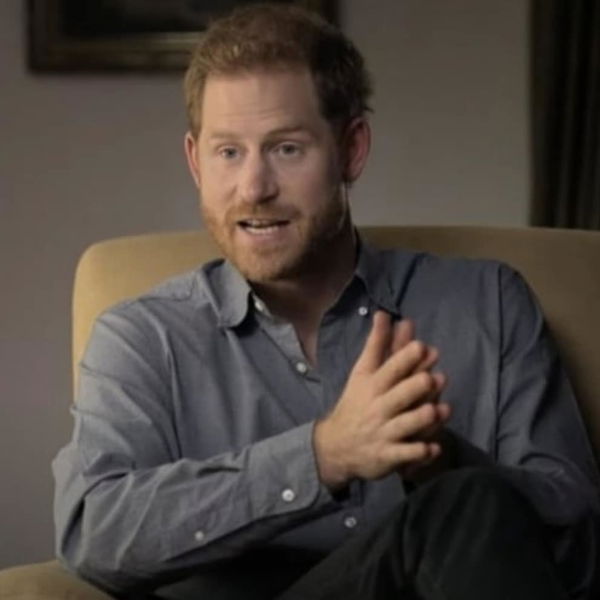
36-Year-Old Surfing Influencer Giulia Manfrini Meets Sudden Demise After Strange Fish Incident in Indonesia
36-year-old surfing coach and influencer from Italy meets bizarrely shocking demise while surfing in Indonesia.

“My heart aches”: Surfing Community Devsated As Bethany Hamilton’s 3-Year-Old Nephew Passes Away Days After Unfortunate Accident
The surfing community laments as Bethany Hamilton's nephew succumbs to injuries after more than a week of battle against fate.

Despite Increase in Shark Attacks, Florida Surfing Stars Overcome Life-Threatening Injuries to Continue Catching Waves
Despite the recent sharp attacks in the waters off of the Florida coast, the surfing community remains unfazed.

Weeks After Surviving Shark Attack, 62-Year-Old Surfing Star Back on His Board as He Took On Hurricane Milton Challenge
Not even a shark attack can slow down a 62-year-old surfing icon as he takes on new challenge on turbulent waters.
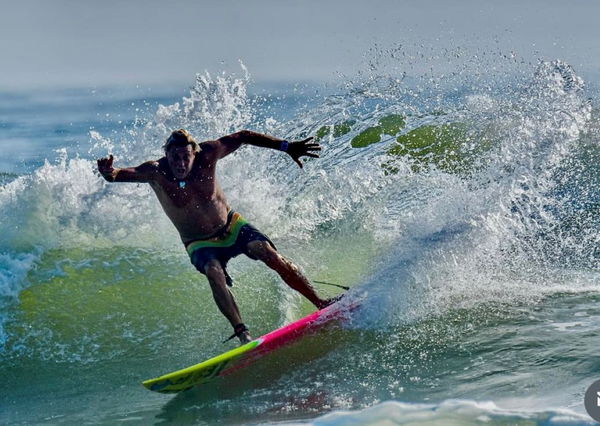
Despite Almost Losing His Arm, Surfing Teen Unbothered by Scary Shark Attack: “Got the Inside of My Arm”
Shark attack gets real as 16 year old Florida teenager gets bitten while surfing, but that hardly discourages the USA junior.

After Prince Harry and Kelly Slater’s 2023 F1 Interaction, Surfing Legend’s California Ranch Receives a Royal Visit
Kelly Slater takes his friendship with Prince Harry after his meet with the latter in the 2023 Formula 1 Grand Prix in Austin, Texas.
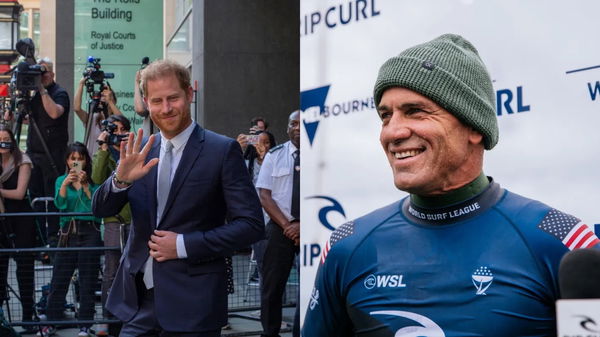
“Broke Me”: Surfing World Reacts to Olympian Owen Wright’s Saddening Confession About Father’s Dementia
Owen Wright has overcome a lot of challenges. But his toughest battle was watching his father's health deteriorate over the years.
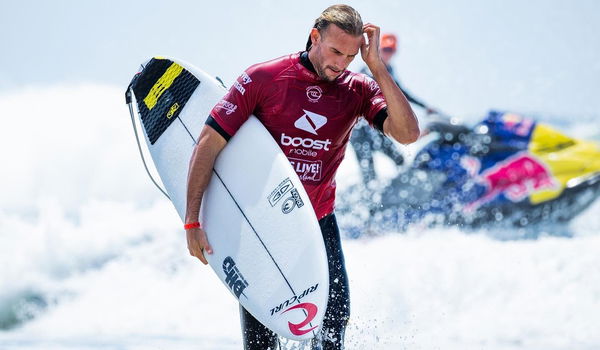
Worried For Safety, Surfer Tyler Wright’s Wife’s Outrage Against Abu Dhabi’s WSL 2025 Inclusion Gains Fans’ Support: “Heartbreaking”
As the 2025 WSL Championship Tour dates are revealed, the surfing community joins Tyler Wright's partner in feeling baffled.

As 3-Year-Old Battles for Life, Surfer Bethany Hamilton Once Again Requests Community’s Help Amidst Family’s “Worst Nightmare”
Bethany Hamilton has once again urged the surfing community for its help as her three year old nephew battles for his life.
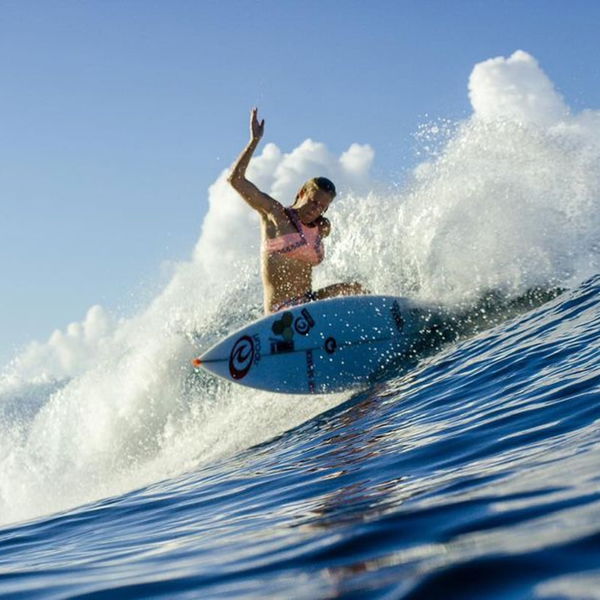
About Surfing
When put simply, surfing is the act of standing up on a specially designed-board and riding a wave. The choice of construction of the board varies from level of experience to personal preference. It is an exhilarating water sport that seems pretty straightforward but is far from one. From different kinds of surfboards to events to even particular kinds of waves, each factor changes the face of the game in an instant. In the early days, surfing was done exclusively in the ocean but now also happens in the US Great Lakes, The Mediterranean Sea, and even artificial wave pools.
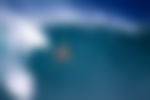
History of Surfing
Famously dubbed 'the sport of Kings,' Surfing originated in Hawaii. The island's royalty and commoners practiced the sport as a recreational activity in the early 20th century. Touring surfers took the sport with them back to countries like the US and Australia, where it transformed into a global phenomenon. In 1976, a World Surfing Tour was founded, which is now called the World Surf League (WSL). Surfing has now grown into a multi-billion dollar industry and is governed by the International Surfing Association, representing 55 nations across the planet.
The four kinds of Surfboards
There are majorly four different kinds of surfboard that a surfer can choose from. Ranging from a short one to a long one, every surfer chooses these based on personal preference and expertise. But amateur surfers are advised to start with the longest possible board.
Here is the breakdown of every board:
1. Shortboard: Is a six and a half feet or shorter board. Has little volume and three fins attached to the bottom. It is specifically designed for high-performance surfing.
2. Mini Mal, Mini Tanker, Funboard, Fish, Egg, Bonzer: These boards make up the rest of the shorter-side boards. While varying between five and eight feet, these boards have more volume than a shortboard.
3. Gun: A seven to nine feet board designed for surfing on large waves.
4. Longboards: The biggest of the bunch. These boards measure at nine feet or up. These boards come with either a tri-fin setup or a single-fin setup (best for classic surfing).
Types of Surfing Waves
Much like the boards, the waves also make a huge difference to the surfing experience. A swell is essential for surfing, without which one cannot surf. On average, a swell travels at roughly 15-20mph when it hits the shore. Broadly, there are three major waves identified in the surfing world.
1. Surging Waves: Useless for surfing. These waves come from deep water and onto steep beaches. And instead of breaking, these waves surge up on the beach.
2. Spilling Waves: A gently sloping sea floor gives way to these waves, causing a gradual peak. The energy release is rather slow, hence the crest spills down a wave.
3. Plunging Waves: The perfect wave for a surfer. These happen when a swell moves from deep waters to shallow ones. This obstructs the forward momentum of waves, resulting in a peak.
Key Tricks in Surfing
Let's be honest, the best part about watching surfing is seeing the tricks. And the best part about being one? Performing them! While there are many iterations of tricks in the sport, here are the five most important ones.
1. The Barrel: Surfing's most prized and difficult maneuver. It forms as the wave's crest pitches forward and over, leading to a hollow chamber within the wave.

via Getty
RIO DE JANEIRO, RIO - MAY 12: Kelly Slater of the United States of America surfs during his Round 1 heat at the Oi Rio Pro on May 12, 2015 in Rio de Janeiro, Brazil. (Photo by Daniel Smorigo/World Surf League via Getty Images)
2. Bottom Turn: The most fundamental move in surfing. It happens when a surfer has stood up and dropped down the face of a wave. Once at the bottom of the wave, a surfer pivots their momentum towards the open face of a wave.
3. Top Turn: For a shortboard surfer, this is the most fundamental move. While riding a wave, the crest hangs there, begging to be 'hit.' And that is what surfers do by generating extra speed by dipping back in the wave's trough.
4. The Floater: Some waves do not break along the beach perfectly. When a surfer faces the situation, they must use their speed to ride up, onto, and across the crest to reach the other side of the wave's breaking section.
5. The Air: It is essentially launching off a wave into the air. What began as a simple jump has transformed into Air reverse or a 360 off the lip. This trick has the most variations, including inverted 540s, back-flips, and alley-oops.
Different Kinds of Surfing
Venturing into the final 'variety section' of the sport, we stumble upon the various kinds of surfing. Five major kinds of surfing are popular around the globe.
1. Freesurfing: This is simply non-competitive surfing. While there are no rules here, a strict code of conduct is duly followed.
2. Competition Surfing: While competitive rules vary between organizations, all of them have divisions. Broken down by age and gender, two to four surfers go against each other.
3. Shortboarding: Fast moves and quick tricks are the goals when surfing on a shortboard.
4. Longboarding: The 'classic' style of surfing. It consists of smooth and relaxed control of the board.
5. Tow Surfing: The sport's most recent and exclusive iteration. A jetski, tied with a waterski rope, held by a surfer doing tricks — that is Tow Surfing.
Major events in Surfing
1. Pipe Masters - Held at the Banzai Pipeline on the North Shore of Oahu, Hawaii. Consists of one of the most dangerous waves anywhere in the world.
2. WSL Finals - Lower Trestles, California, USA.
3. Surf Ranch Pro - Lemoore, California, USA. It is the only stop at an artificial wave.
4. Nazaré Tow Surfing - Nazaré, Portugal. Home to the world's biggest waves.
5. Triple Crown of Surfing - North shore of Oahu hosts two more events. Together, they are known as the Triple Crown of surfing. It is one of the most coveted titles in pro surfing.
6. Red Bull Cape Fear - A fan-favorite, it is the only big wave slab event in the world.
7. Jaws Big Wave Championships - Maui, Hawaii.
8. International Surfing Association World Surfing Games
Famous Surfers
1. Kelly Slater: Talking about individual achievements, Kelly Slater is the GOAT of surfing. He has won 11 World Titles in his career and owns the record for the youngest as well as the oldest Men's champion in history. Away from the waves, he also pioneered a wave pool technology that creates man-made waves for surfing.

via Getty
SYDNEY, AUSTRALIA - MARCH 12: Kelly Slater of the United States rides a wave into shore during an aerial expression session on day one of Surfsho at Bondi Beach on March 12, 2010 in Sydney, Australia. (Photo by Cameron Spencer/Getty Images)
2. Duke Kahanamoku: Famously called the 'Father of Surfing.' His contribution to surfing is what James Naismith's was to Basketball. An Olympic champion swimmer, Kahanamoku invented modern surfing in the 1920s.
3. Layne Beachley: The seven-time Women's World Champion is one of the most accomplished women to have taken up surfing. The Australian won six consecutive world titles from 1998 to 2003 — the only time any woman or man has achieved the feat. Her final title win came in 2006. She is also one of the few women to have competed against men.

